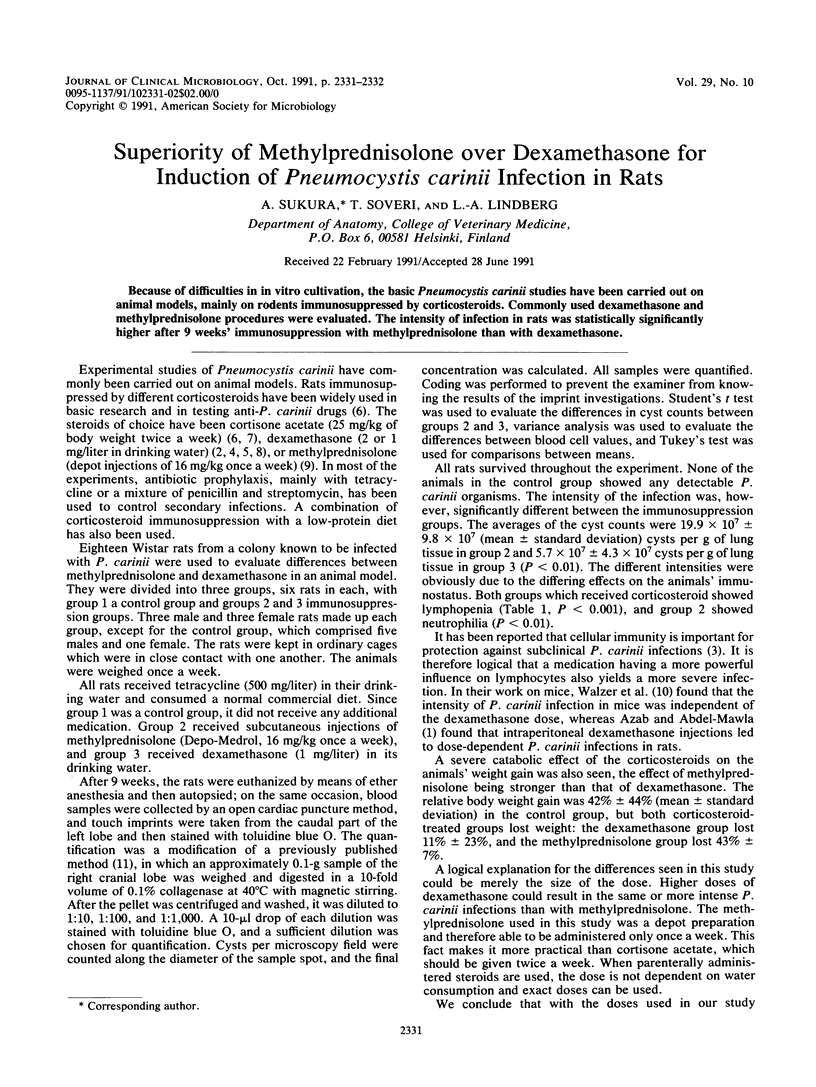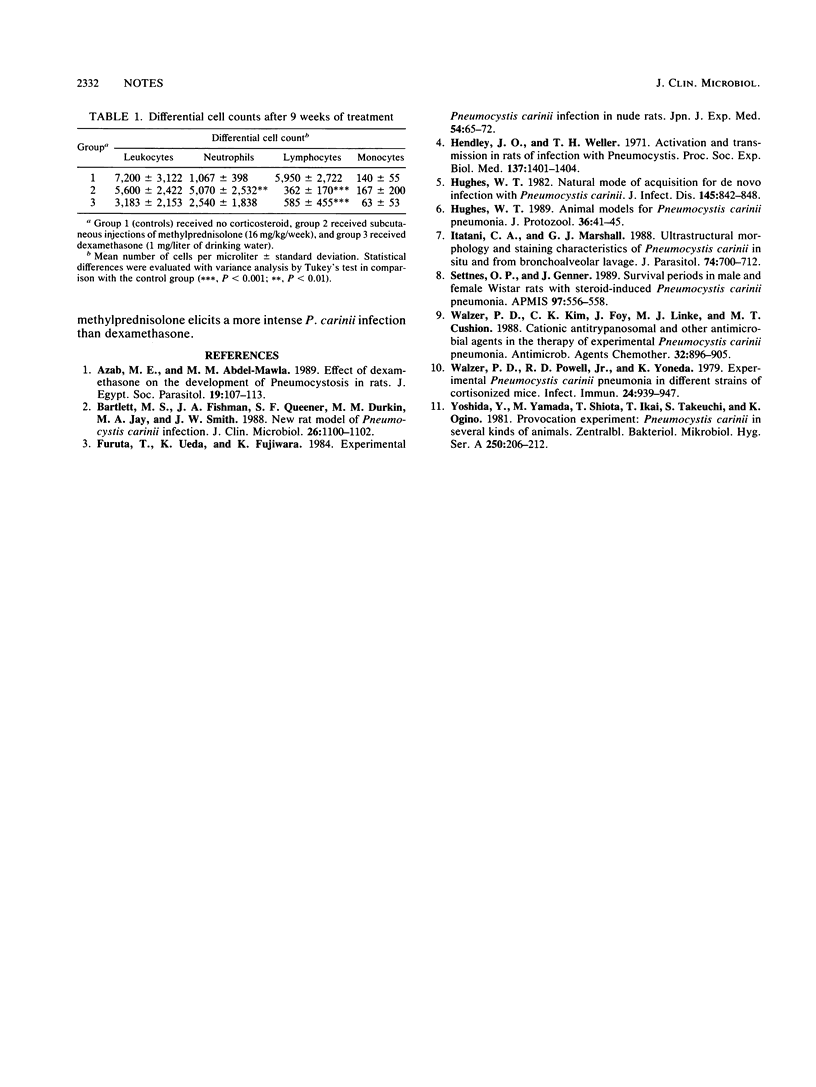Abstract
Because of difficulties in in vitro cultivation, the basic Pneumocystis carinii studies have been carried out on animal models, mainly on rodents immunosuppressed by corticosteroids. Commonly used dexamethasone and methylprednisolone procedures were evaluated. The intensity of infection in rats was statistically significantly higher after 9 weeks' immunosuppression with methylprednisolone than with dexamethasone.
Full text
PDF

Selected References
These references are in PubMed. This may not be the complete list of references from this article.
- Azab M. E., Abdel-Mawla M. M. Effect of dexamethasone on the development of pneumocystosis in rats. J Egypt Soc Parasitol. 1989 Jun;19(1):107–113. [PubMed] [Google Scholar]
- Bartlett M. S., Fishman J. A., Queener S. F., Durkin M. M., Jay M. A., Smith J. W. New rat model of Pneumocystis carinii infection. J Clin Microbiol. 1988 Jun;26(6):1100–1102. doi: 10.1128/jcm.26.6.1100-1102.1988. [DOI] [PMC free article] [PubMed] [Google Scholar]
- Furuta T., Ueda K., Fujiwara K. Experimental Pneumocystis carinii infection in nude rats. Jpn J Exp Med. 1984 Apr;54(2):65–72. [PubMed] [Google Scholar]
- Hendley J. O., Weller T. H. Activation and transmission in rats of infection with Pneumocystis. Proc Soc Exp Biol Med. 1971 Sep;137(4):1401–1404. doi: 10.3181/00379727-137-35798. [DOI] [PubMed] [Google Scholar]
- Hughes W. T. Animal models for Pneumocystis carinii pneumonia. J Protozool. 1989 Jan-Feb;36(1):41–45. doi: 10.1111/j.1550-7408.1989.tb02688.x. [DOI] [PubMed] [Google Scholar]
- Hughes W. T. Natural mode of acquisition for de novo infection with Pneumocystis carinii. J Infect Dis. 1982 Jun;145(6):842–848. doi: 10.1093/infdis/145.6.842. [DOI] [PubMed] [Google Scholar]
- Itatani C. A., Marshall G. J. Ultrastructural morphology and staining characteristics of Pneumocystis carinii in situ and from bronchoalveolar lavage. J Parasitol. 1988 Aug;74(4):700–712. [PubMed] [Google Scholar]
- Settnes O. P., Genner J. Survival periods in male and female Wistar rats with steroid-induced Pneumocystis carinii pneumonia. APMIS. 1989 Jun;97(6):556–558. [PubMed] [Google Scholar]
- Walzer P. D., Kim C. K., Foy J., Linke M. J., Cushion M. T. Cationic antitrypanosomal and other antimicrobial agents in the therapy of experimental Pneumocystis carinii pneumonia. Antimicrob Agents Chemother. 1988 Jun;32(6):896–905. doi: 10.1128/aac.32.6.896. [DOI] [PMC free article] [PubMed] [Google Scholar]
- Walzer P. D., Powell R. D., Jr, Yoneda K. Experimental Pneumocystis carinii pneumonia in different strains of cortisonized mice. Infect Immun. 1979 Jun;24(3):939–947. doi: 10.1128/iai.24.3.939-947.1979. [DOI] [PMC free article] [PubMed] [Google Scholar]
- Yoshida Y., Yamada M., Shiota T., Ikai T., Takeuchi S., Ogino K. Provocation experiment: Pneumocystis carinii in several kinds of animals. Zentralbl Bakteriol Mikrobiol Hyg A. 1981;250(1-2):206–212. [PubMed] [Google Scholar]


